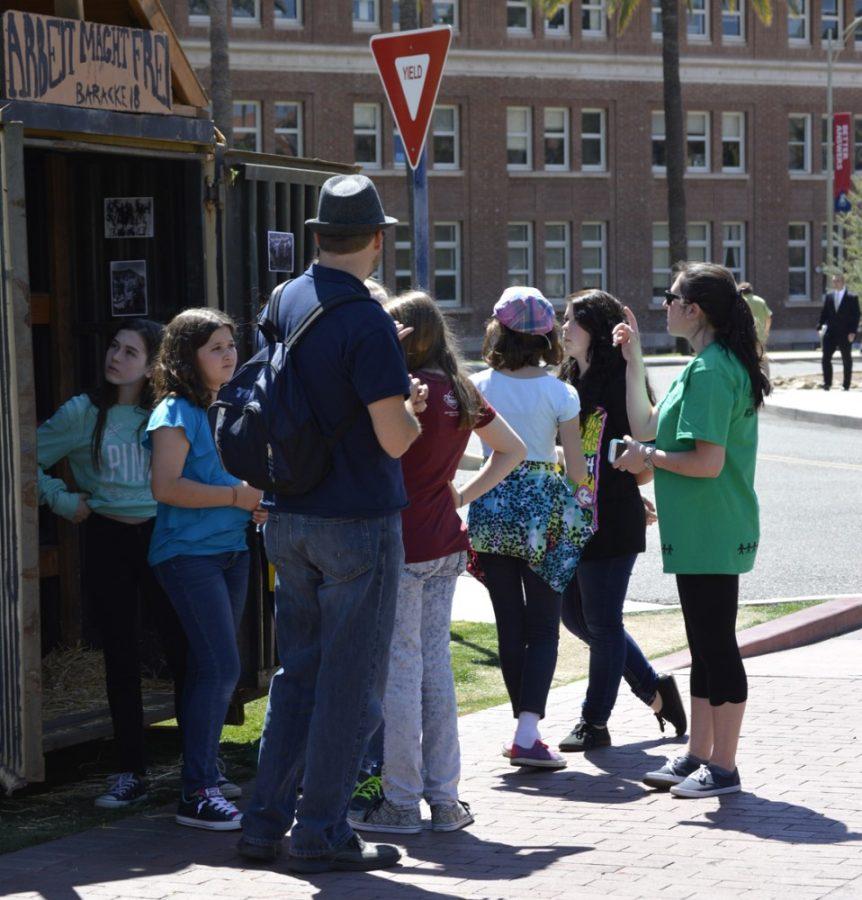The UA Hillel Foundation educated students, faculty and Tucson community members about the Holocaust and the importance of remembering it at the 24th annual Holocaust Vigil and Butterfly Project on Wednesday.
The pods set up on the UA mall were decorated to represent different aspects of life either before or during World War II and the Holocaust, said Hanna Port, a senior studying business management and Judaic studies and co-chair of the vigil and project.
“This pod is a barrack; it’s a representation of what people lived in and slept in throughout the years of the war in all of the concentration and death camps,” Port said about one of the pods. “The pod on the far left over there is a memorial pad, and they have candles in there to represent each of the 13 death camps set up by Nazi Germany.”
Port said another pod represents what life was like for Holocaust victims before World War II or when the Holocaust began. Inside, there was a traditional Shabbat table set with candlesticks, a glass of wine and challah bread, along with photographs of Jewish families posted on the walls.
The fourth and final pod represented the experience of being transported across Europe in a cattle car, which is how many of the Holocaust victims were moved to concentration or death camps, Port said.
Many of the students, faculty and community members who attended the vigil participated in the Butterfly Project, Port said.
“Each butterfly represents a child victim, and we write the names of the child on the back so that their memory may live on,” Port said.
Daniella Almeida, a junior studying physiology and Africana studies, said the Butterfly Project is something that is done every year with this event. She said it provides people with the unique opportunity to take some time between classes to make an impact and to learn the importance of this piece of history.
“At Hillel, there is going to be a big wall where all of these butterflies will be up on display so people can go and see their butterfly,” Almeida said.
Jonathan Burger, co-chair of the vigil and project, said he was surprised by the lack of knowledge some people have about the Holocaust.
“There’ve been a few people that have no idea what the Holocaust was or is, and it kind of blows my mind away sometimes,” Burger said. “This is part of my culture. I have family that was involved in the Holocaust. It just reminds you of the importance of being here as not only a remembrance but also a teaching. I’ve gotten a couple weird questions, but that’s what we’re here for.”
Meryl Engle, a junior studying journalism and religious studies and an intern at Hillel, led multiple discussions encouraging middle schoolers to start thinking about how to teach about the Holocaust once there are no living survivors.
“There will never be an answer to this question,” Engle said to the students. “But it’s imperative that your generation starts thinking about it, because you will be the generation that teaches the next generation and the one after that, and we won’t always have survivors around to make this piece of history as impactful and meaningful as it has been for your and my generation because we have had survivors to talk to.”
_______________
Follow Brandi Walker on Twitter.








